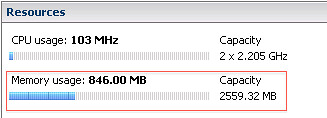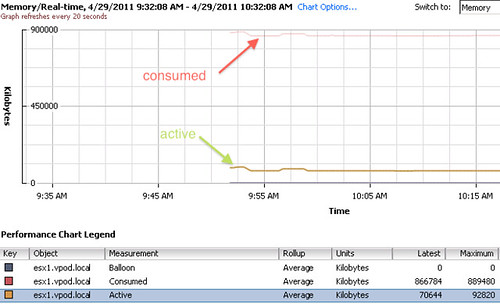I am live at the Launch event in San Francisco with many other bloggers, journalists and analysts. It is the 12th of July, almost 09:00 PDT and Paul Maritz is about come up on stage to talk about the Cloud Infrastructure launch. This article will be update live during the event as we go.
Paul Maritz is taking the stage… Taking the next step in towards the more automated world.
We need to make infrastructure become something that people can depend on and focus on what is important to their business. Navigating your way forward offering a more dynamic infrastructure that will support your existing applications. Using a more flexible infrastructure, allowing people to take resources and aggregate to larger pools reducing operational costs by automating the use of these resources. More and more use of social media and use of mobile devices to connect anytime anywhere and most importantly securely.
Today we will be talking about a more efficient infrastructure with exists of three stages IT Production, Business Production and IT as a Service. In 2009, the VI 3 era, 30% of the workloads were virtualized…. in 2010 with vSphere 4 we reached 40% and it is expected that in 2011 we will hit 50% virtualized with the majority on vSphere.
Accelerating and Amplifying business agility with vSphere 5! Not only vSphere 5 but the worlds first Cloud Infrastructure suite! In addition to vSphere 5 today we announce vSphere Site Recovery Manager 5 (Business Continuity), vCloud Director 1.5 (Policy, Reporting, Self-Service), vCenter Operations 1.0.1 (Monitoring and Management), vShield 5 (Security and Edge functionality).
VMware vCloud = Hybrid. Your private cloud experience needs to be similar to public cloud experience. VMware allows this through the vCloud offering and vCloud Service Providers. Trusted vCloud partners like Colt, Bluelock, Singtel, Verizon, NYSE Euronext, Softbank and CSC are some of the enablers for this.
Steve Herrod up on stage… I expect it is about to get more technical
Why do these new products matter and how do they fit together. Accelerating the adoption by increasing scalability. ESX 1.0 capable of 5000 IOps, ESX 2.0 ~ 7000 IOps, VI 3 100.000 IOps, vSphere 4 300.000 IOps and vSphere 5.0 1.000.000 IOps. Besides performance availability is key. Both HA and FT have been enhanced and of course SRM 5.0 has been released. Added to SRM 5.0 is vSphere Replication. vSphere Replication allows you to use the network to replicate between sites and different arrays. It will allow you to replicate more workloads with a lower costs. SRM is about datacenter mobility, not only for an outage but also pro-actively moving datacenters after an acquisition.
What does cloud computing really mean? Being able to order what you need and what without knowing what happens behind the scenes. IT will behind the scenes validate if they meet the consumers requirements. vCloud Director is all about Simple Self-Service. Deploy virtual machines but more importantly create new vApps and offer these in your own “app store”. The IT Cloud of the producer is all about offering agility. Virtualization enables automation in a way unheard in a physical environment.
Typically multiple tiers are offered within a cloud environment. The VMware Cloud Infrastructure enable you to do so. Intelligent Policy based Management is key with vCloud Director 1.5. Linked Clones is a very important feature to provision virtual machines “aggressively” within the system. It allows for fast provisiong and save up to 60% of storage.
Profile-Driven Storage and Storage DRS are part of vSphere 5.0. It enables you to map different arrays in to logical entities by a concept called a “datastore cluster” and link these to a profile. Virtual machines will be tagged with a profile and this allows you to validate compliancy. Storage DRS does for storage what DRS does for compute resources. Storage and Network IO Control ensures each virtual machine receives what it is entitled to.
For the SMB market a brand new shared storage appliance is introduced today: vSphere Storage Appliance 1.0. It takes vanilla servers and use local drives and present it as shared storage. It will bring agility and availability through shared storage to the SMB.
Auto-Deploy, PXE booting your ESXi hypervisor in to memory! It allows to spin-up more hosts within minutes instead of hours. Adding capacity has never been this simple?
vSphere 5 offers comprehensive security and isolation capabilities through vShield 5.0. vShield App 5 allows you to select regulations to protect sensitive data. It also enables you to get additional auditing in place.
The Cloud Infrastructure represents more than a million engineering hours, more than 100 additional capabilities, more than two million QA hours, more than 2000 partner certifications to enable this.
Rick Jackson up next discussing licensing.
Industry has traditionally licensed on physical constraints. It makes it difficult to create a cloud environment. Customers need to be able to upgrade to new hardware without having physical boundaries. No more “Cores per Proc” limits, no more “Physical RAM per host license”… vSphere introducing vRAM entitlement. Virtual RAM is the amount of virtual memory configured for a powered on virtual machine. vSphere 5 used pooled vRAM across the entire environment.
Packaging has been simplified and moving from 6 down to 5 packages. vSphere Advanced has been eliminated, all customers currently using Advanced are entitled to vSphere Enterprise.
Join us at VMworld for more details around the new product releases. 10AM virtual show, be there for more technical in-depth details!

